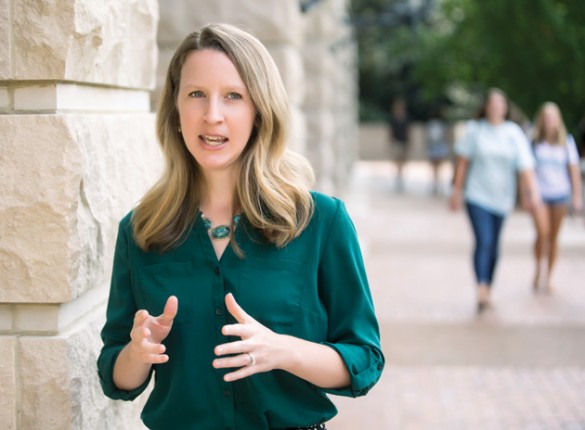
Jennifer Trueblood began her freshman year at Indiana University with a particular career in mind: opera.
“But I took a lot of classes, as one does as you go through college,” she said. “I took psychology and cognitive science courses and really loved them.” Trueblood’s introductory psychology professor advised her to concentrate on developing a strong quantitative background, so she augmented her voice studies with a major in mathematics, then went on to pursue graduate work in cognitive science and advanced mathematics at Indiana.
Today, Trueblood is a mathematical psychologist who develops dynamic and probabilistic models using Bayesian statistical methods to explain complex decisions. “I use math to develop cognitive models that describe a theory about how people might process information and make decisions,” she explained.
Traditionally, such psychological theories are expressed verbally, but verbal models can be difficult to compare, said Trueblood, who was an assistant professor of psychology at the University of California–Irvine before coming to Vanderbilt. “[rquote]If we turn them into equations—something that we can quantify—then we can compare theories very rigorously,” she said.[/rquote]
In its simplest form, creating a mathematical cognitive model might entail assigning points to all the variables that influence a decision. Take, for example, buying a box of cereal: Features like flavor, nutrition or brand could accumulate points, and the cereal with the highest accumulated score is the one the shopper chooses.
But decisions are rarely that simple or isolated. Returning to the cereal example, most of us recognize that a store’s design influences what products we buy or how much we spend. Trueblood is trying to develop models that describe the general cognitive process that underpins how context influences our choices in any scenario.
She also uses quantum probability theory to model how people reason about multiple pieces of information. One of the problems she’s looked at is how jury decisions can be influenced by the order in which the prosecution and the defense present their cases. Trueblood has developed a quantum probability model that accounts for how one piece of information influences how we evaluate subsequent information. “Order effects are probably one of the oldest findings in judgment literature,” she noted.
Trueblood currently has a National Science Foundation grant with husband Bill Holmes, assistant professor of physics, to study how people make decisions in dynamically changing environments.
But it’s not all work and no play. She still makes time for her first love, winding down with a little opera every now and again.
View the complete list of new university faculty for 2015-16.
View the complete list of new medical faculty for 2015.